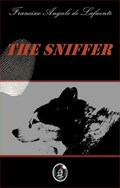The sniffer was born as a tool to aid police investigations. Its operating principle was simple: it detected tiny particles left behind by people and objects and could reconstruct past events.
It consisted of a set of sensors capable of detecting infinitesimal amounts of any substance, connected to powerful software that analyzed and interpreted the captured data.
The key was in the algorithms created by young genius Brandon Nelson. By entering DNA samples and other information about the crime scene into the system, the software could determine who was present, what actions they carried out, and in what order the events occurred.
The sniffer obtained samples from the environment, detected drugs, explosives, bodily fluids and microscopic fibers that went unnoticed to the human eye. From a single drop of sweat it could reconstruct a face and identify a suspect.
The first prototype had cables all over the perimeter of the area to analyze. But later versions were portable, the size of a vacuum cleaner. The suction system captured particles which were analyzed in real time.
It was used at first without revealing details to the public. The technology was so advanced that criminals would try to alter results if they knew about it.
Thanks to the sniffer many complicated crimes were solved. Its Bayesian analysis and data crossing avoided tampering and false accusations. The reliability was so high that results were solid evidence in court.
Of course, there was resistance to change. More traditional police criticized relying on a "toy." But over time the sniffer gained prestige by closing previously unsolvable cases.
It revolutionized forensic science. A powerful tool that functioned thanks to Artificial Intelligence through a neural network. In the right hands it brought justice, but in the wrong hands it could plant evidence and incriminate innocents. A double-edged sword that challenged ideas about privacy and security in the information age.

